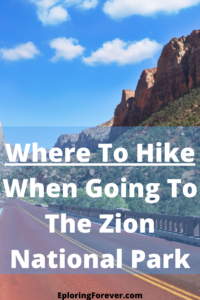
Zion is a climbing paradise with breathtaking perspectives. Zion Canyon itself is relatively small, just 15 miles in length, so there are thick trails in This small area. Underneath, we depict our favorite tours in Zion Canyon and a few trips in Kolob Canyon for the individuals who want to travel somewhat further to appreciate spectacular perspectives. Here You can read our favorite courses and backpacks for daily climbing.
Zion is perhaps the most visited Park in the United States next to the Smoky Mountains National Park, and many individuals come here to climb. Yet, You don’t have to be a seasoned explorer to appreciate the trails in This Park. Climbs range from not exactly half a kilometer to multi-day climbs with trails for all degrees of trouble.
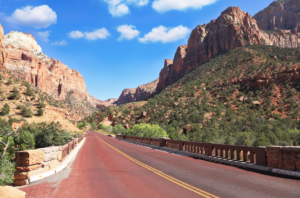
In the event that there is sufficient opportunity to climb or take short walks, Weeping Rock, the Lower Emerald Pool, and the Riverside walk are your most ideal choices. Yet, If You need to attempt a portion of Zion’s signature classic statures, The Narrows or the Angels Landing is apparently what You are finding for on a day trip. If you are taking a road trip to Zion National Park, you check out these cool tips for what to bring for a Road Trip.
How Would I Get To Zion National Park?
Climbing Zion National Park is exceptionally easy. However, there are a couple of rules. You need to know contingent upon when You are visiting.

To ease the clog in the Park and lessen contamination, the National Park Service regularly operates free transports throughout the Park and even in the nearby town of Springdale, Utah. A few parts of the Park are shut to cars and can just be reached by transport or by walking (or by bicycle If You have one). Transfer transports are always exceptionally normal – they run each 5 or 6 minutes the last time I was there – however they run at various times relying upon the season.
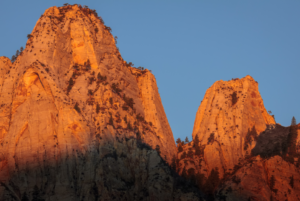
On the off chance that You visit Zion between February and November, the best way to get to the Park is by utilizing the free transport administration. You have to park your car someplace in Springdale and then take the transport to the Park. The National Park Service does This to decrease contamination from outflows, traffic, and parking issues. So it really is a surprisingly beneficial turn of events.
The primary transport leaves the Zion Visitor Center at 7 a.m., and the last transport leaves the Sinai Temple at 6.15 p.m. You can track down the full timetable upon arrival at one of the Park’s bus transport stops.
In case you’re traveling on the booked transfer plan, make sure You don’t miss any of the following transports in the Park. It is vital not to wait for the last transport as it is almost guaranteed that This bad kid will be filled to the edge and keep You sans paddle as soon as You need to get back where You are. Not awesome, especially If You take a walk all day and just have to go to the camp or the lodging!
On the off chance that You visit Zion in December or January, the best way to get around is with your own car as the transports don’t work and parking is free for everybody. Winters are less packed yet not abandoned. It is therefore energetically prescribed that You rise early to have a parking space.
1. The Narrows
The specialty of Zion, Narrows, is a canyon that opens to all of its arched canyons, and also explorers who wouldn’t fret getting the little wet may climb in This astonishing stone cut along the Virgin River. This is the most popular climbing trail in Zion National Park, yet it is done in the mid-year after the waterway has retreated from the spillover of spring and is sufficiently safe to cross.
Although there are several ways to deal with This trip, the vast majority start This trail where this Riverside Walk closes. In areas where the walls of the canyon are near the waterway, to the point where there is no more beach, You should walk on the stream while moving upstream and between the stones on the stream bed, navigate as You go.
You can make this trip as short or long as You want and return anytime. However, there’s no way to avoid Big Springs. The best scene is about two hours on Wall Street. Here the light walls are nearest. Most climbers make the full circle six to eight miles.
Also, If You can get a grant, You can do the top-down climb on an exceptional 16-mile journey.
This is anything but an easy excursion. This water is really chilly, the stones are tricky, and the temperatures in This valley can be cooler than in the remainder of the Park.
2. Pa’Rus Trail
On the off chance that You have your four-legged companion with you, This is the lone road in the Park that You can go for a climb. Canines should be restrained. This 3.5 miles out and back course is completely paved and wheelchair accessible.
Pa’rus Street is frequently flat and therefore accessible to families with wheelchairs, cyclists and pets on a leash. To access the road from the visitor community, go across the road to Watchman’s Campground and cross the extension.
You can also reach it from transfer station no. 3 when You are already in the valley. The Pa’rus trail leads You along. This waterway also offers probably the greatest perspectives on the Park’s tall sights. This stretch is 3.5 miles back and forward.
The Pa’Rus trail is also the lone road in the Park that allows bikes. The trail follows the stream part of the trail and offers magnificent perspectives on the towering mountains called Watchman, West Temple, Bridge Mountain, and Bee Hive.
3. Angels Landing

Angels Landing is quite possibly the most popular climbs in the Park. This amazing climb takes You to great perspectives on the valley. This dramatic climb ascends the side of the mountain in a progression of changes known as Walter’s Wiggles and then follows a narrow strip that closes at 1,500 feet where You can peer down preposterous.
While it’s a popular trip, it’s not for everybody. It’s an extreme 8km circle trail with genuine gains and tight slopes and massive plunges. High-altitude explorers and small youngsters shouldn’t attempt it. Part of the road has chains for the handle.
This excursion starts in the cave and takes three to six hours. The road is open all year adjust; however can be sweltering and jammed in summer or frigid in winter.
Here at Scout’s Lookout, there are flat and expansive perspectives on the valley, and it’s a great spot for explorers who want to bounce the chain into Angels Landing. The last half mile (although it looks any longer) to Angel’s Landing is along the narrow back of the lift line.
Chains are anchored in the stone to aid explorers; This course is for adventure searchers. At the top of Angels Landing, you’ll be rewarded with a 360-degree perspective of the valley.
It is prescribed to start This trip pronto. This is perhaps the most popular trail in the Park, and it gets really occupied at noon.
In 2020 another traffic management program was acquainted with avoiding traffic jams. Check the Park’s site for the latest news.
4. Canyon Overlook Trail
This is a breathtaking 1-mile climb on the Zion-Mount Carmel Highway that leads to a high vantage point overlooking the canyon. The actual trail is part of the attraction as it bends around the side of the mountain, embraces the stone face, turns onto a boardwalk above the falls, and watches out preposterous landscapes everywhere.
The large drops are as often as possible guarded by handrails. However, any are definitely not. Eventually, You should negotiate narrow edges without baffles, which makes This trail unsuitable for little youngsters.
The head of the track is on the east side of the passage immediately after leaving the passage. You have to enter the parking parcel as soon as You leave the passage, or You will lose the stop, and the return will be troublesome.
5. Emerald Pools
The trip to the Emerald pools starts at the Zion Lodge transfer station and incorporates three pools at various points along the sidewalk: the Lower Emerald Pools, the center Emerald Pools, and the upper Emerald pools. You can go to all three or simply the principal bunch contingent upon your energy level or the time You want to spend here.
Regardless of whether You basically slip into the Emerald Lower basins, which is a 1km full circle along a paved path, the climb merits the climb and is awesome If You have kids.
The ponds, which once in a while look more like puddles of mud, are located at the foot of a goat wall or are loaded up with a waterfall, contingent upon the season. As of not long ago, there is a beautiful view over the valley and past it over the Virgin River. At one point, You can see a large part of the stone wall that tumbled off the stone.
On the off chance that You want to proceed, the path proceeds behind the wall that falls and moves over the waterfall area to the Middle Emerald Basins. Close to the Pools, You will discover fantastic perspectives on the encompassing mountains. From here, You can get back to the parking part voluntarily.
Alternatively, You can take the Kayenta course and go climbing and end the climb at the cave, where You can catch the parking transport.
For more adventure, one can climb from the center pools to this upper Emerald pool. The last part of the course has some uncovered edges and may not be suitable for youngsters or individuals who are seriously afraid of statures.
6. Observation Point
This 8-mile circular climb offers shocking perspectives on Zion Canyon and is a standout amongst other climbing trails. This is a mountain climb to and through the Echo Canyon, over the beautiful Navajo sandstone of Zion and dramatic past precipices. Finally, You reach a flat observation point with a broad perspective of the valley.
From here, You can peer down at the stone walls and the valley that is crossed far underneath the Virgin River. In case you’re not ready for the drama. Also, hordes of the Observation Point, Angels Landing, is a great alternative. Although it is longer and taller, it is less packed and takes You through some staggering perspectives on the canyon.
The course of This trip is to the Weeping Rock car park. In winter, the path can be covered with snow or glaciers.
At the hour of composing, a large rough waterfall hindered This track. Given the tremendous damage, it is by all accounts a drawn-out stop.
7. The Hidden Canyon
Hidden Canyon can be utilized alone or as a catalyst to move the Observation Point. All alone, it is a substantially less complicated and a lot more limited trip, with a return excursion of 3.5 km. It is an ideal decision. If You just want to climb for a couple of hours and You are not afraid of statures.
The course plunges from the Weeping Rocks Route and finishes in a progression of meanders and finishes in a hanging valley. Be warned, and This path has some genuine inclinations along with the narrow areas of the alley. Some have chains on the bluff to be maintained, and others don’t. It isn’t suitable for youngsters and won’t be comfortable for anyone who is afraid of statures.
At the hour of composing, a large rough waterfall also impeded This trail. Park staff say This will be a drawn-out stop.
Accommodation Alternatives Near Zion National Park
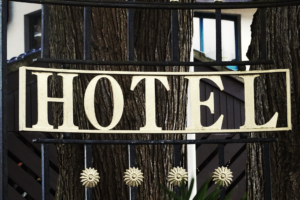
The nearest city park and most helpful place to sit is Springdale, right external the South Gate. From spring to fall, transport transports run from Springdale to the park visitor focus, where You can take a parked transport along the Zion Canyon Scenic Drive.
Inn alternatives in Springdale are ample and range from high to average. However, the spending choices are not many. For better value, You can stay near St. George, about an hour away, which has all sorts of chain lodgings and a couple of cheap rooms.
Lavish Hotels: One of Springdale’s most beautiful extravagance resorts is Cliffrose Lodge and Gardens, directly before the park gate. Virgin stream Hotel offers standard rooms and beautiful villas. The retreat has several pools and hot tubs, as well as a Riverside beach.
Cable Mountain Lodge is another sumptuous property with studios and apartments, a beautiful open-air pool area, and great perspectives.
Mid-Range Hotels: At the upper finish of the mid-range, Flanigan’s Inn offers a wide range of rooms and apartments, some with balconies or terraces, as well as restaurants and spa facilities. The Holiday Inn Express Springdale and Majestic View Lodge are also worth considering. Both are elegant two-story accommodations with seasonal Pools, exquisite perspectives, and inviting normal areas with colossal windows.
St. Howard Johnson Inn and Suites George have straightforward, however comfortable rooms, some of which have a refrigerator. Free breakfast is given. The Chalet Motel is located in a calm area of St. George is also famous. Rooms have been as of late renovated, and some have a kitchenette.
Tips To Ensure A Safe Trip To Zion National Park
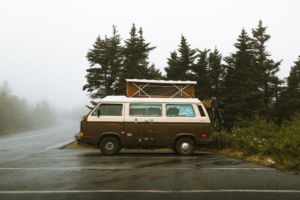
Many people are leaving for the summer holidays This year, even If gasoline has not dropped. Driving is even less expensive than buying family tickets, including babies who are much easier to handle in their car than on a crowded plane.
So it would be best If You made your car trip as safe and comfortable as possible for your family to Zion National Park. Packing a cooler will make for a more enjoyable trip for You and your children to Zion National Park. You can include snacks, drinks, water, and even sandwiches. Home.
Nowadays, it is also easier to entertain your children, because we now have portable DVD players, old hand and stand games, coloring books and small board games. Or You could invent games like who can point to the reddest cars or who can see the most cows first If You drive in the country.
Before starting a road trip to Zion National Park, the first thing You need to do is make sure your car is in top condition. Along with that, You should make up a trunk kit with things like extra radiator coolant, an oil can, windshield washer fluid, paper towels, and water.
A must is to check all the fluids of your cars, especially the cooling system. It would probably be a good idea to have the cooling system washed and refilled with clean coolant so that your car does not overheat on the hot pavement of highways.
It may even be a good idea to take your car in exchange for oil, as they always check the other liquid levels, check for leaks, the condition of the hoses, and usually the battery and air filter.
This will make your car’s engine run more efficiently, saving fuel. For the safety of You and your passengers, You should check the condition of all child or infant seat belts and car seats.
It is a good idea to plan your trip to Zion National Parkand find the best route to follow. If You do not have a GPS, You can purchase a road atlas of the cities or states You will be traveling through. The road atlas usually contains other information, such as resorts, restaurants, gas stations, etc. Having This knowledge in front of You will prevent You from making unnecessary stops to ask for directions.
It is essential to respect the speed limits in whatever state You are in. This will not only save You the cost of a speeding ticket but it has been proven that If You drive over 60 miles per hour, your fuel consumption will decrease.
As always, You should have the car’s registration in your glove box at hand, and on a trip to Zion National Park, You should also have a copy of your car insurance policy with You on long trips, just in case You have an accident. Or steal your car or something. An unforeseen incident occurs on your vehicle.






